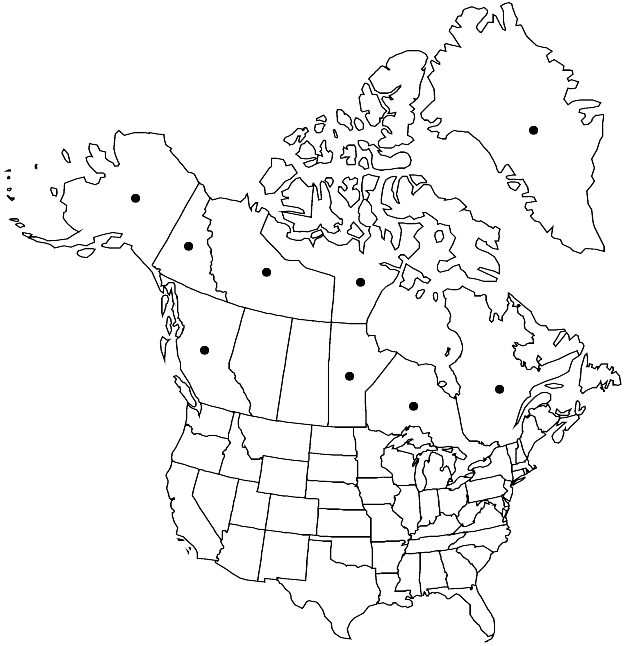Cinclidium latifolium
Bot. Not. 1877: 43. 1877.
Plants 3–6(–12) cm. Stems dark brown. Leaves green, yellowish green, or reddish brown, strongly reflexed to arcuate-recurved when moist forming bowl-like or cylindric pockets, orbicular, broadly obovate, or spatulate, 2–3 mm; base short-decurrent; margins recurved, 1-stratose; apex rounded or obtuse, apiculate or cuspidate, apiculus sharp, cusp lightly toothed; costa percurrent or excurrent; medial laminal cells elongate or short-elongate, (50–)60–90(–110) µm, in diagonal rows, not or weakly collenchymatous; marginal cells linear or short-linear, in 2–4 rows. Sexual condition dioicous. Seta red or reddish brown, 1.5–4 cm. Capsule yellowish green or light green, elliptic, 2–3 mm. Spores 25–50 µm.
Phenology: Capsules mature summer.
Habitat: Wet tundra soil in rich fens and marshes, often calcareous
Elevation: low to moderate elevations
Distribution

Greenland, B.C., Man., N.W.T., Nunavut, Ont., Que., Yukon, Alaska, Europe.
Discussion
Its strongly reflexed to arcuate-recurved leaf margins make Cinclidium latifolium one of the most distinctive mosses in the northern region.
Selected References
None.